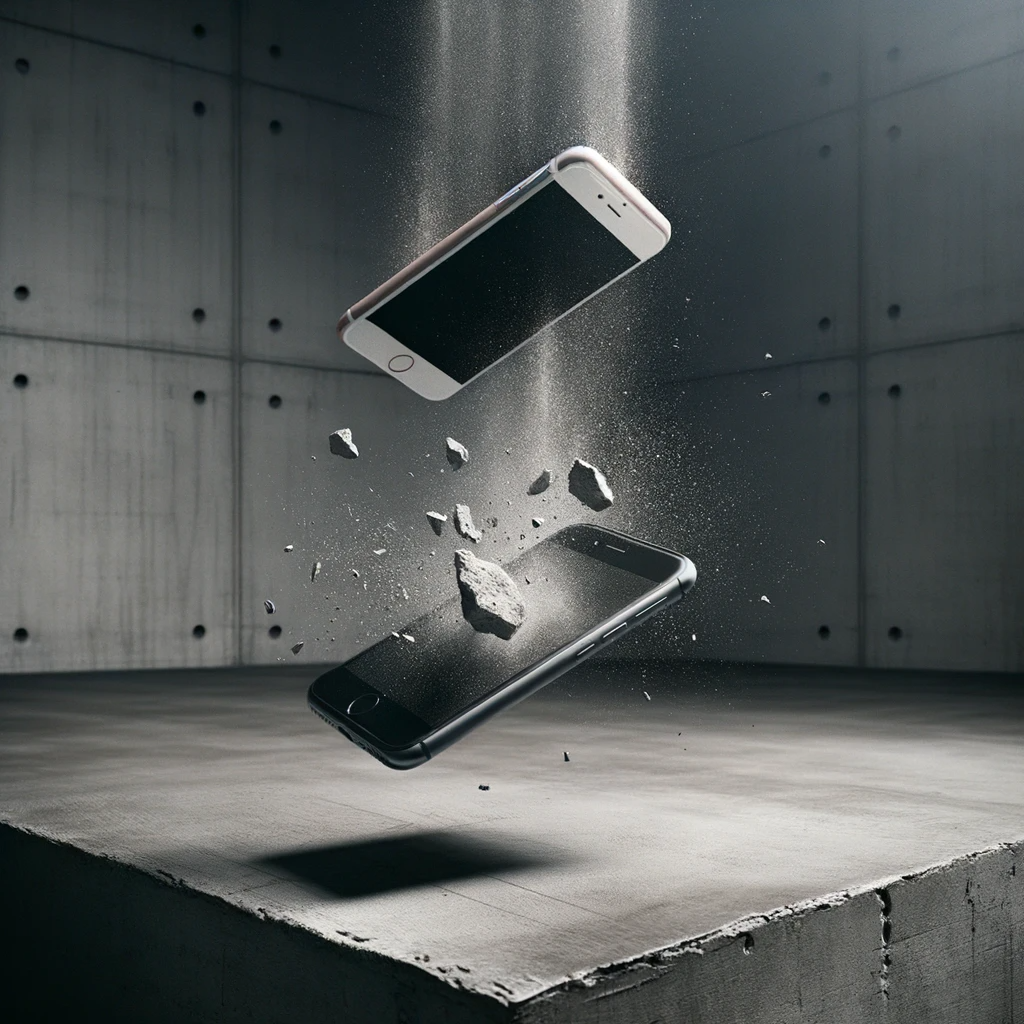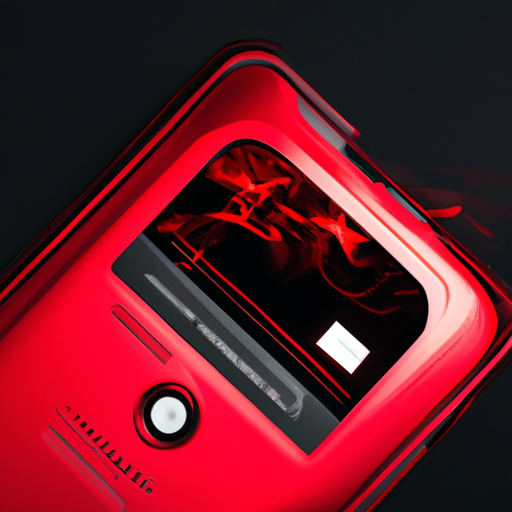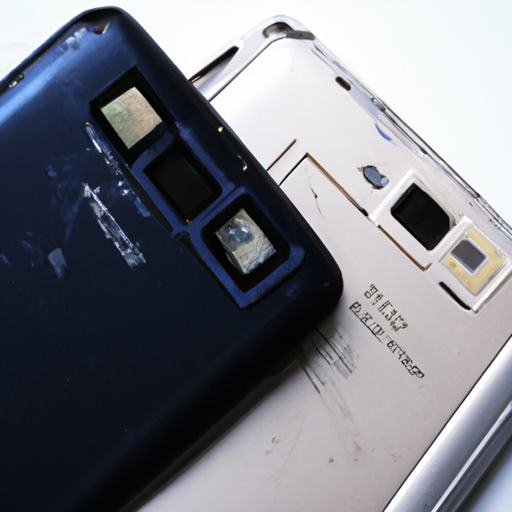So here we are, with the iPhone 14 Pro Max and the Galaxy S22 Ultra, ready to go head-to-head in a drop test. We’ve got some interesting specs to consider, like the iPhone’s flat design and stainless steel body, as well as Samsung’s curved edge and armor aluminum construction. The test will be conducted from a height of 1.45m, giving us a good idea of how these phones hold up in real-world situations. Plus, we’ve got CASETiFY sponsoring the video, providing different levels of drop protection with their cases for the iPhone 14 series. Let’s see how these two flagship phones fare and if using a protective case truly makes a difference in preserving their durability.
Overview of iPhone 14 Pro Max and Galaxy S22 Ultra
Today, we will be diving into a comprehensive drop test video between two of the most highly anticipated smartphones of the year: the iPhone 14 Pro Max and the Galaxy S22 Ultra. Both of these devices boast impressive features and specifications, making them top contenders in the market. This drop test will help us determine which phone holds up better in real-life scenarios and whether the choice between the two should be based on durability as well.
Let’s start by taking a closer look at the standout features of the iPhone 14 Pro Max and the Galaxy S22 Ultra individually.
Description of the iPhone 14 Pro Max features
The iPhone 14 Pro Max comes with a range of cutting-edge features that make it a top choice for tech enthusiasts. One of the standout features is its flat design, which sets it apart from the curved edge design of the Galaxy S22 Ultra. This gives the iPhone a sleek, modern look that many find appealing.
Another notable feature of the iPhone 14 Pro Max is its stainless steel body. This premium material not only adds to the device’s aesthetics but also provides enhanced durability and a more substantial feel in the hand.
Apple’s ceramic shield glass is another feature that sets the iPhone 14 Pro Max apart. The company claims that this glass is the toughest on any smartphone, offering increased resistance to scratches and accidental drops. This added protection is a significant advantage for those who prioritize the durability of their devices.
Description of the Galaxy S22 Ultra features
The Galaxy S22 Ultra is no slouch when it comes to features either. Samsung has packed this device with impressive technology to attract consumers. While it does not have a flat design like the iPhone, its curved edge design has its own appeal.
In terms of durability, the Galaxy S22 Ultra features an armor aluminum body, which provides a lightweight yet robust construction. This material ensures that the device can withstand everyday wear and tear.
While it may not have the same level of emphasis on drop protection as the iPhone, the Galaxy S22 Ultra still offers a solid build quality that can withstand the test of time.
Now that we have a better understanding of the standout features of both devices, let’s dive into the drop test and see how they fare.
Design of iPhone 14 Pro Max vs Galaxy S22 Ultra
When comparing the design elements of the iPhone 14 Pro Max and the Galaxy S22 Ultra, it’s evident that both devices have their own unique aesthetics.
The iPhone 14 Pro Max features a flat design, which gives it a sleek and modern look. This design choice not only enhances its visual appeal but also contributes to a comfortable grip in hand. The flat edges provide a more substantial feel, making it easier to hold and use for extended periods.
Additionally, the iPhone 14 Pro Max sports a stainless steel body, which adds a premium touch to its overall design. This material not only looks elegant but also offers increased durability, ensuring that the device can handle daily use without showing signs of wear and tear easily.
Furthermore, Apple’s use of ceramic shield glass on the iPhone 14 Pro Max’s display adds an extra layer of protection against accidental drops and scratches. This feature is a significant advantage for those who prioritize the longevity and resilience of their devices.
On the other hand, the Galaxy S22 Ultra features Samsung’s iconic curved edge design. While this design choice offers a more immersive viewing experience and a sleek appearance, it does have some differences in terms of grip and ergonomics compared to the flat design of the iPhone.
In terms of materials, the Galaxy S22 Ultra boasts an armor aluminum body, which provides a lightweight yet durable construction. This material choice ensures that the device can withstand the rigors of daily use without compromising its structural integrity.
Overall, both devices have their own unique design elements that appeal to different users. Whether you prefer the flat design and stainless steel body of the iPhone 14 Pro Max or the curved edge design and armor aluminum body of the Galaxy S22 Ultra, both devices offer a visually appealing and well-built package.
Drop Test Methodology
Before we dive into the results of the drop test, it’s essential to understand the methodology behind it. Conducting a drop test requires careful planning and execution to ensure accurate results.
First and foremost, the drop test is carried out from a height of 1.45 meters. This height was chosen as it represents a realistic scenario where a device might be dropped from pocket or hand level.
The phones are dropped side by side to simulate real-world conditions accurately. This approach allows for a direct comparison between the iPhone 14 Pro Max and the Galaxy S22 Ultra, ensuring that any differences in durability can be easily identified.
Throughout the test, the devices are subjected to multiple rounds of drops, each focusing on specific aspects of durability. This comprehensive approach provides a holistic view of how well the phones can handle various types of drops.
Now that we understand the methodology of the drop test, let’s delve into the results and see how the iPhone 14 Pro Max and the Galaxy S22 Ultra perform.
Role of CASETiFY in the Test
Before we discuss the drop test results, it’s essential to acknowledge the role of CASETiFY as the sponsor of the video. CASETiFY has provided protective cases for the iPhone 14 series, which were used during the drop test.
As a sponsor, CASETiFY’s involvement in the test underscores their commitment to providing robust phone protections to consumers. Their cases offer different levels of drop protection, ensuring that users can find a suitable option based on their specific needs.
Let’s take a closer look at the protective cases provided by CASETiFY for the iPhone 14 series.
Explanation of CASETiFY’s sponsorship
CASETiFY has sponsored this drop test video to showcase the effectiveness of their protective cases for the iPhone 14 series. The company’s commitment to producing high-quality, durable cases is evident in their various product offerings.
During the drop test, three different cases from CASETiFY were used: the impact case, the ultra impact case, and the bounce case. Each case offers different levels of drop protection, allowing consumers to choose the one that suits their requirements best.
The impact case provides drop protection from a height of 8.2 feet, while the ultra impact case offers increased protection from a height of 11.5 feet. The bounce case takes protection to the next level, boasting an impressive 21.3 feet of drop protection.
These cases are lined with CASETiFY’s eco shock material, ensuring that the impact energy is absorbed effectively and minimizing the chances of damage to the device. The raised bezels and rings around the cameras provide additional protection for these critical components.
Now that we have an understanding of CASETiFY’s sponsorship and the protective cases provided, let’s move on to the results of the drop test.
Round 1 Test Results
In round one of the drop test, both the iPhone 14 Pro Max and the Galaxy S22 Ultra were subjected to a backdrop from just under 1.5 meters. Let’s take a look at the outcome of this round and the damage observed on both phones.
After the drop, the good news is that both phones remained in working condition. However, the bad news is that both devices suffered shattered rear glass. Upon closer inspection, it is evident that the iPhone’s rear glass fared worse, with cracks spreading all over the surface. In contrast, most of the damage on the Galaxy S22 Ultra’s rear glass concentrated on the left side.
The most significant observation in round one was the cracked main camera on the iPhone. This was an unexpected development, as the iPhone 13 Pro Max did not suffer similar damage in last year’s drop test. It raises questions about whether the camera housing on the new iPhone protrudes more, leading to increased vulnerability in the event of a drop.
While the damage to the main camera is concerning, the good news is that the camera itself appears to be functioning correctly. We will continue monitoring its performance throughout the test.
In terms of drop protection, the Galaxy S22 Ultra outperformed the iPhone 14 Pro Max in round one. However, it’s worth noting that the iPhone with the CASETiFY bounce case applied fared much better. The raised ring around the camera housing provided effective protection, safeguarding all lenses. Additionally, the case itself had only a few scuff marks, which is expected after a drop onto concrete.
Round 2 Test Results
Moving on to round two of the drop test, both phones were dropped from a corner height onto a hard surface. This simulated a common scenario where a phone slips out of a user’s hand and lands at an angle.
After the corner drop, it became evident that neither phone came away unscathed. Both devices suffered scuffs to their corners, although the depth of the scuffs appeared slightly more substantial on the Galaxy S22 Ultra’s aluminum body compared to the stainless steel body of the iPhone 14 Pro Max.
Surprisingly, the rear glass on the iPhone looked even worse after this round, with visible chunks missing at the point of impact. The deep purple color of the iPhone also revealed a hint of blue underneath, adding an interesting visual element.
Considering the damage observed, it’s difficult to declare a clear winner for this round. The scuffs on the phones’ corners were too close to call, making it a tie.
On the other hand, the iPhone 14 Pro Max with the CASETiFY bounce case exhibited a different outcome. Thanks to the air cavities and the compression ribs on the case’s corners, the phone had a soft landing, minimizing visible damage to both the case and the device itself. Once again, the iPhone’s solid performance with the bounce case highlights the importance of using a protective case for drop protection.
Round 3 Test Results
In round three of the drop test, the phones were dropped face down to simulate a common scenario where a phone slips out of a user’s hand and lands with the screen facing the ground.
At the end of this round, both phones had shattered screens, but the level of damage differed. The cracks on the Galaxy S22 Ultra’s screen were more severe, spider-webbing across its surface. In contrast, the damage on the iPhone’s screen was concentrated mostly at the top.
A notable observation in this round is the functionality of the biometric unlocking methods. Despite the shattered screen, the iPhone’s Face ID still appeared to be working correctly. On the other hand, the Galaxy’s fingerprint scanner stopped functioning after multiple attempts, requiring users to clean the screen continuously.
In terms of drop protection, the iPhone 14 Pro Max emerged as the winner in round three due to its functional Face ID. This result highlights the durability and reliability of Apple’s design, even in the face of significant damage.
As for the bounce case on the iPhone, it proved its effectiveness once again. The combination of the eco shock material and the raised lip surrounding the phone ensured that it remained intact after the drop test. The case itself sustained minimal visible damage, further solidifying its status as a reliable protective solution.
Bonus Round Results
In addition to the three rounds of the drop test, a bonus round was conducted to further push the limits of both devices. The phones were dropped directly onto steel, simulating an extreme scenario where a phone falls onto a hard, unforgiving surface.
After this brutal bonus drop, it became evident that both the iPhone 14 Pro Max and the Galaxy S22 Ultra suffered significant damage. Chunks of glass flew in all directions upon impact, resulting in screens that were completely shattered.
The Galaxy’s screen fared worse, with crushed glass and dead pixels visible, especially at the bottom right. Meanwhile, the iPhone’s front glass appeared relatively intact, but the rear glass displayed deep grooves at the top right.
Upon closer inspection, some of the cracks that initially appeared around the cameras on the iPhone started causing flaring, particularly noticeable on the selfie camera. This raises concerns about the long-term impact of damage around critical components.
However, the iPhone with the bounce case proved to be the standout once again. Even after the brutal drop onto steel, the case itself remained in good condition, providing continued protection for the device. The iPhone, when removed from the case, looked as good as new, with no visible signs of damage.
Overall Scorecard
After completing all four rounds of the drop test, it’s time to compare the overall results and determine which phone comes out on top. Let’s take a closer look at the scorecard.
In round one, the Galaxy S22 Ultra had the advantage, as it suffered less damage to its rear glass compared to the iPhone. However, the cracked main camera on the iPhone was a significant drawback. This round goes to the Galaxy.
In round two, where both phones were dropped from a corner height, it was challenging to declare a clear winner. The scuffs on the corners of both devices were comparable, resulting in a tie.
Round three saw the iPhone 14 Pro Max emerge victorious, thanks to the functionality of its Face ID despite the shattered screen. The Galaxy’s fingerprint scanner stopped working, giving the iPhone the upper hand in this round.
Lastly, the bonus round resulted in significant damage to both devices. However, the iPhone’s bounce case proved its worth, safeguarding the phone from irreversible damage. This round goes to the iPhone with the CASETiFY bounce case.
Taking into account all four rounds, the overall scorecard is a tie. Both phones showcased their strengths and weaknesses, making it clear that a protective case is vital for ensuring drop protection.
Conclusion
In conclusion, the drop test between the iPhone 14 Pro Max and the Galaxy S22 Ultra has given us valuable insights into the durability of these devices. While both phones exhibit impressive features and specifications, the test allowed us to determine their performance in real-life scenarios and whether they can withstand accidental drops.
Throughout the test, the iPhone 14 Pro Max showcased several advantages, such as its flat design, stainless steel body, and ceramic shield glass. These features contribute to enhanced durability and give users peace of mind regarding the long-term resilience of their devices.
On the other hand, the Galaxy S22 Ultra displayed commendable build quality and resistance to daily wear and tear. The armor aluminum body ensures that the phone remains structurally intact, even with regular use.
It is important to note that a protective case plays a significant role in drop protection. The CASETiFY bounce case, in particular, demonstrated outstanding performance, allowing the iPhone 14 Pro Max to withstand the test’s rigorous conditions with minimal damage.
For consumers, the drop test results have several potential implications. It highlights the importance of choosing a durable and well-built smartphone that can handle accidental drops. Additionally, it underscores the significance of investing in a reliable protective case, such as those offered by CASETiFY, to safeguard valuable devices from damage.
Ultimately, the drop test serves as a reminder of the importance of robust phone protections. It is essential for consumers to prioritize durability and take necessary precautions to prevent damage, ensuring that their smartphones continue to serve them well for years to come.










